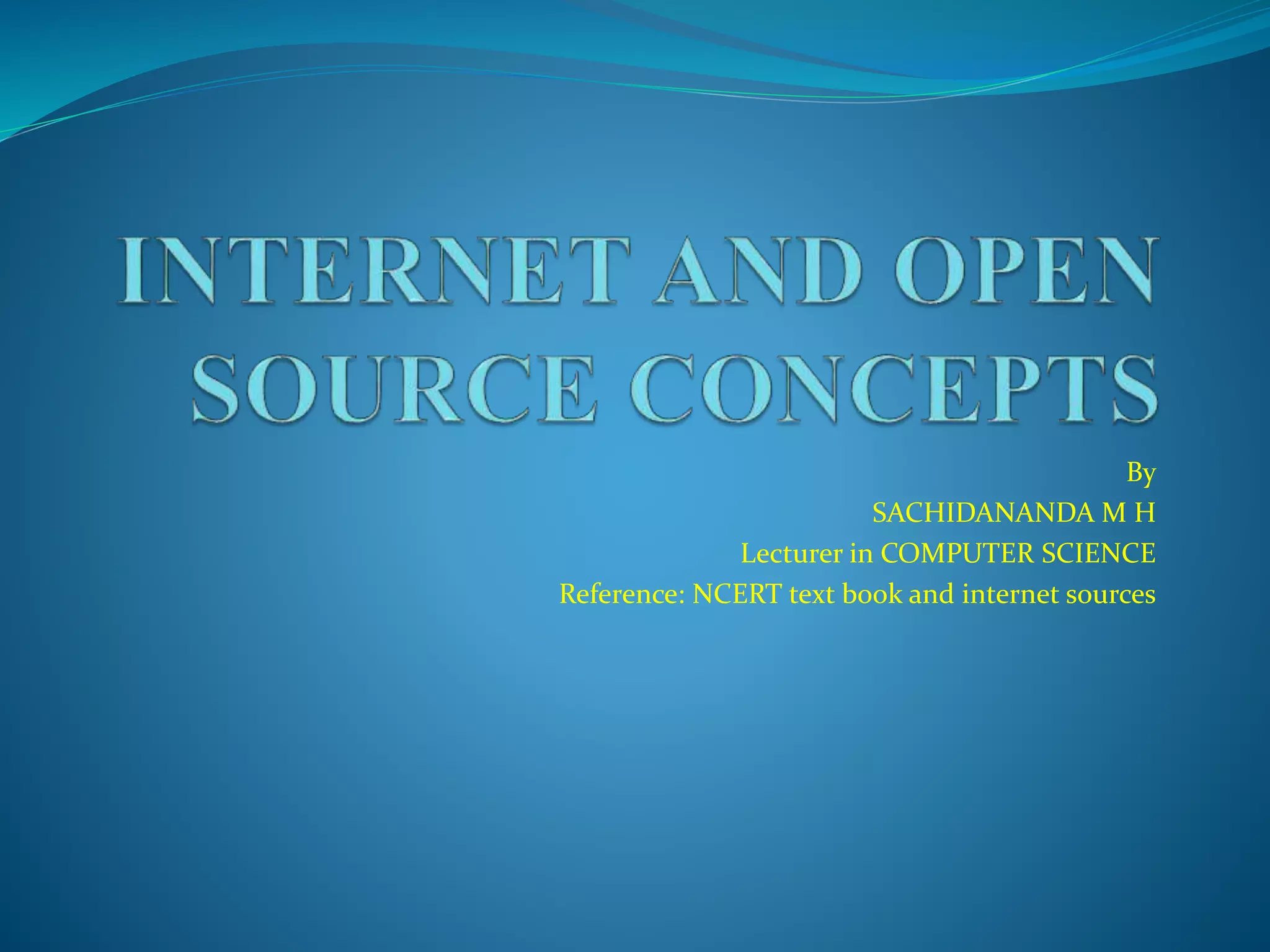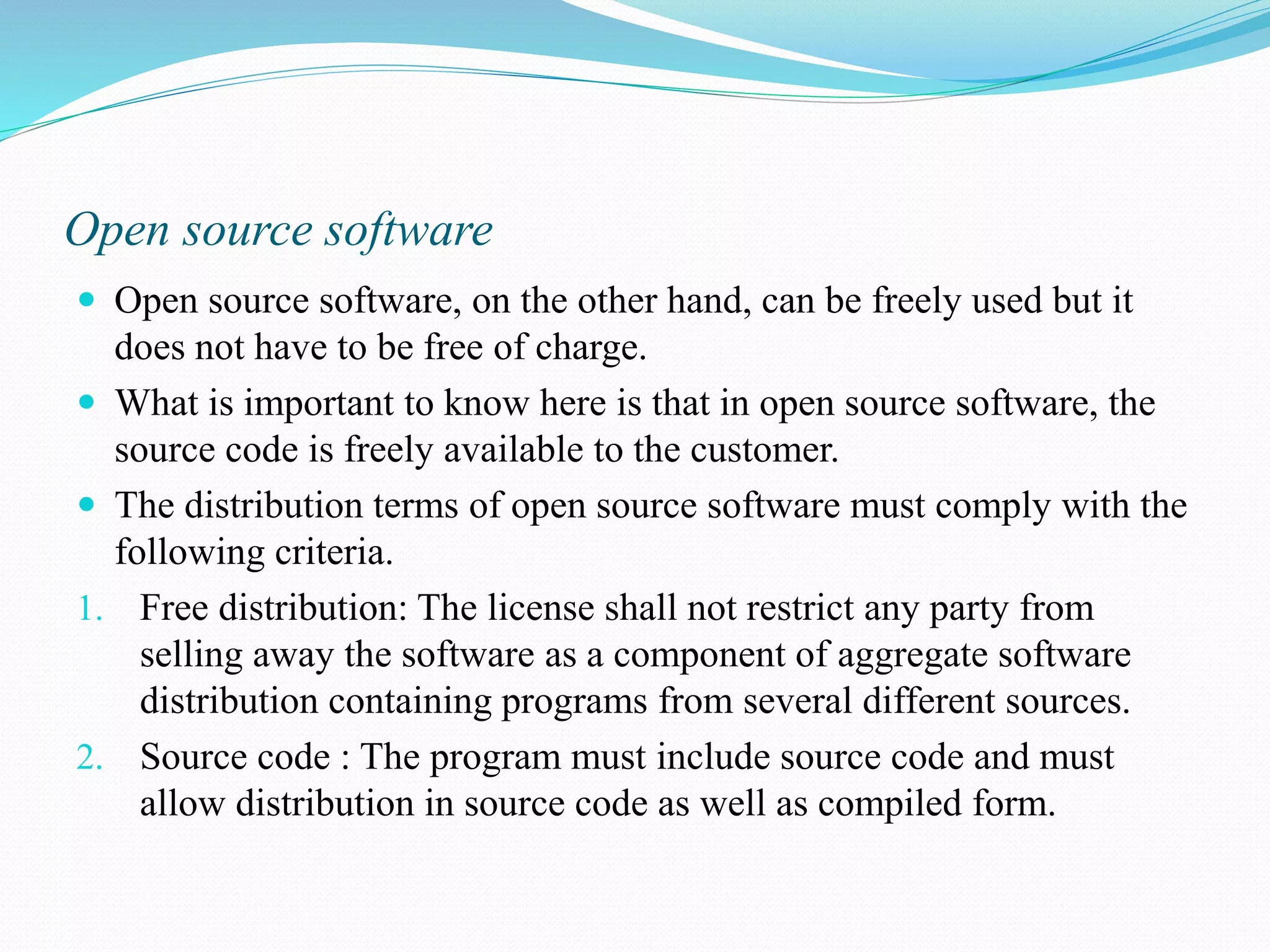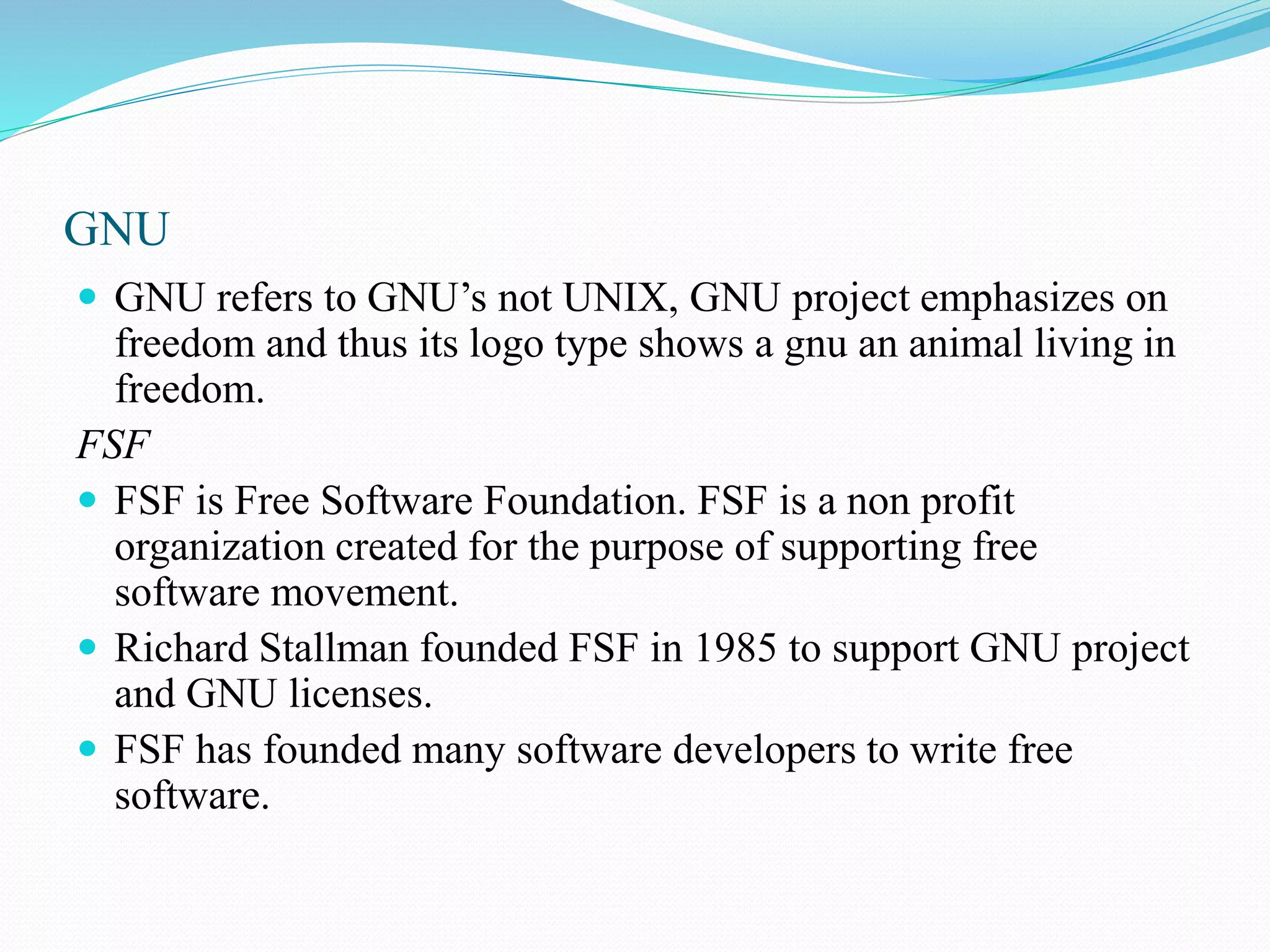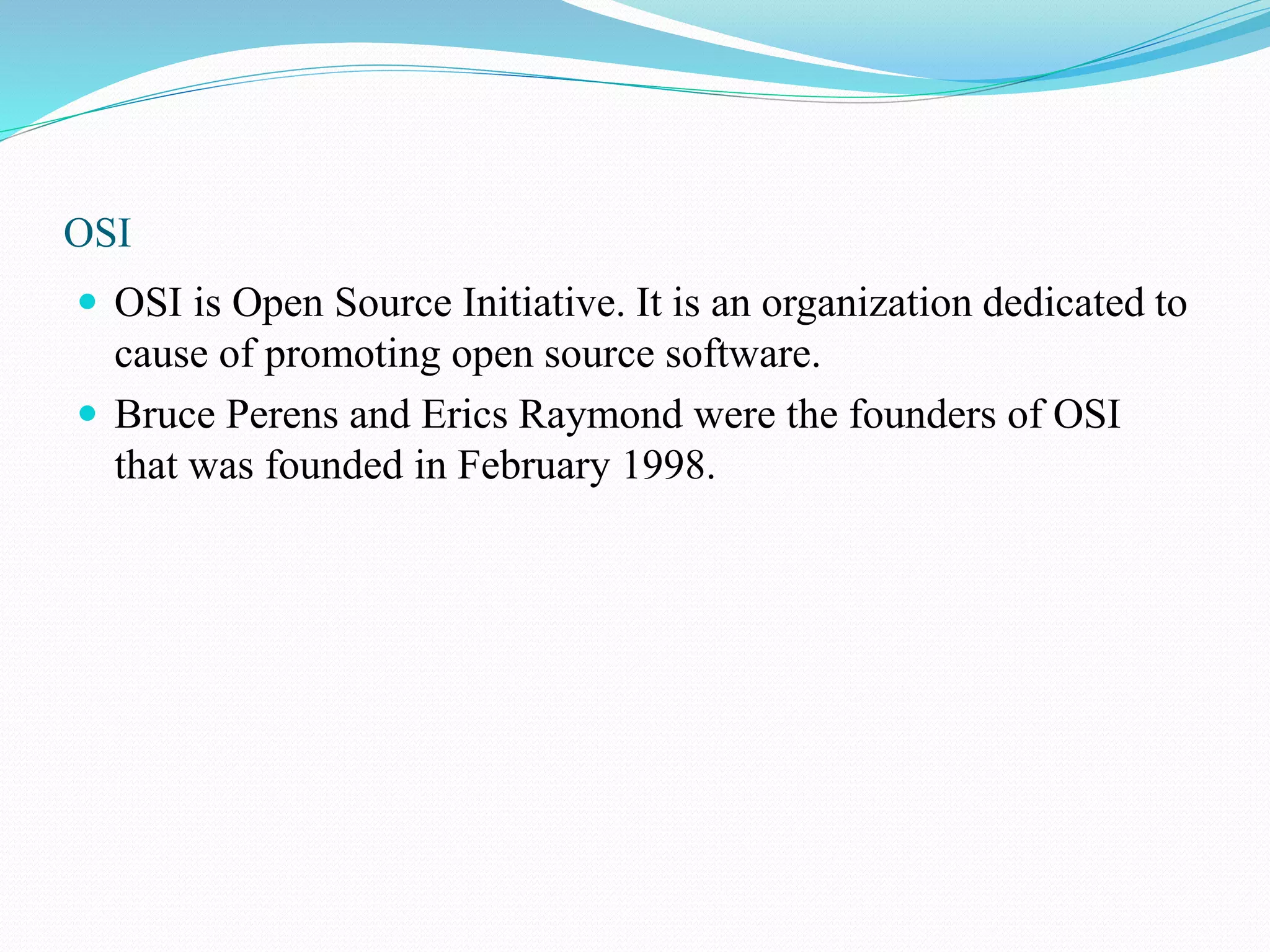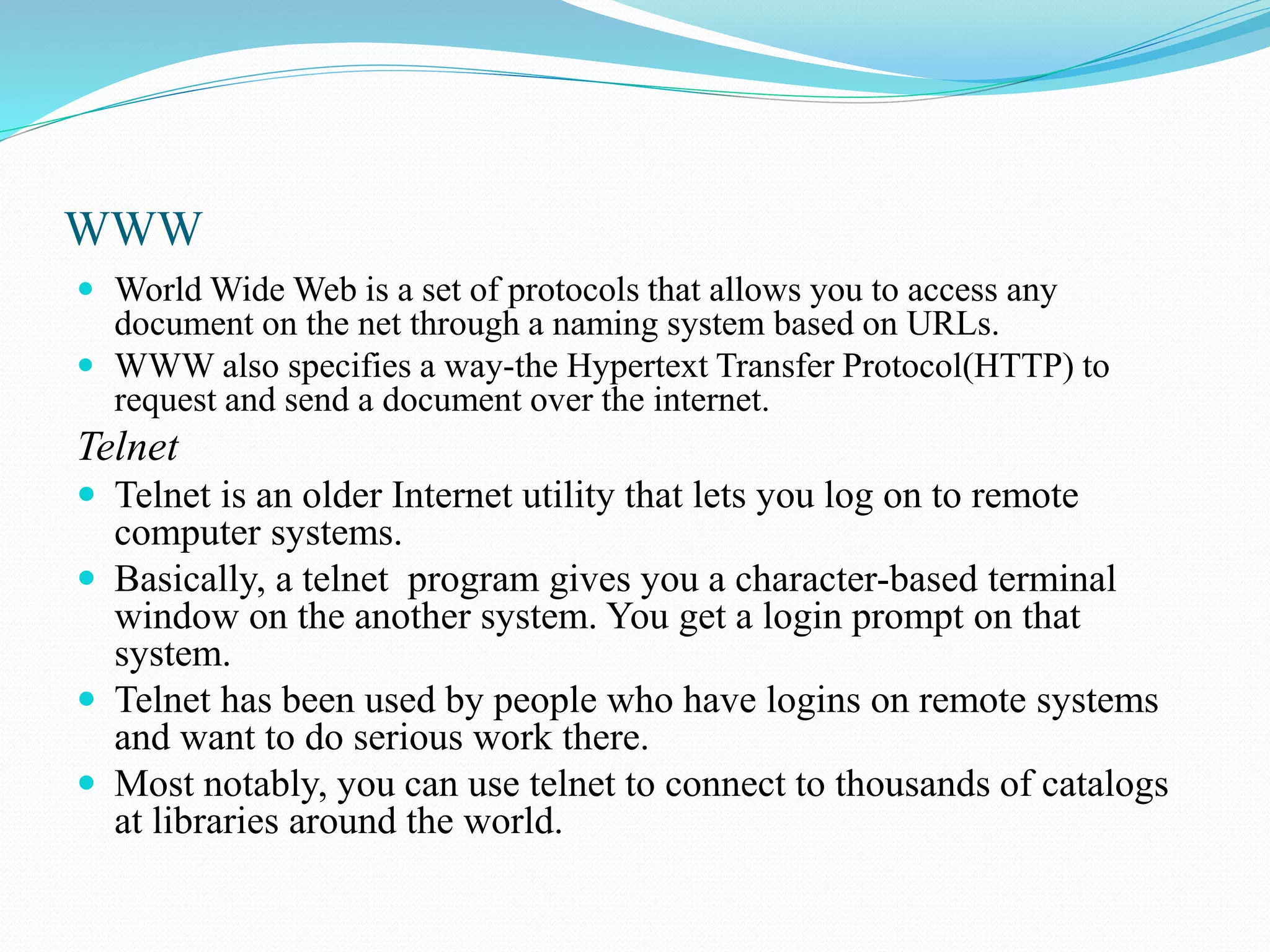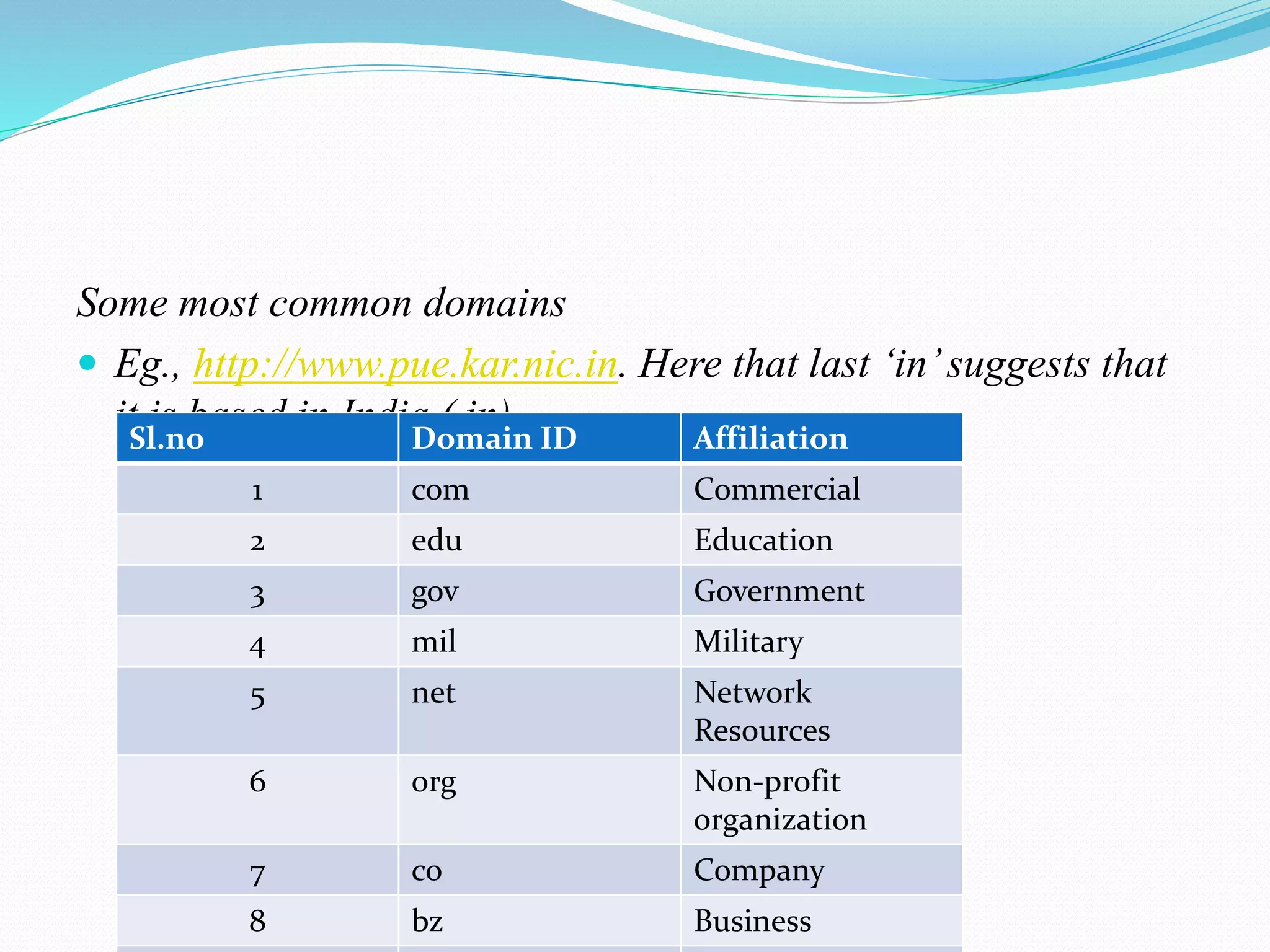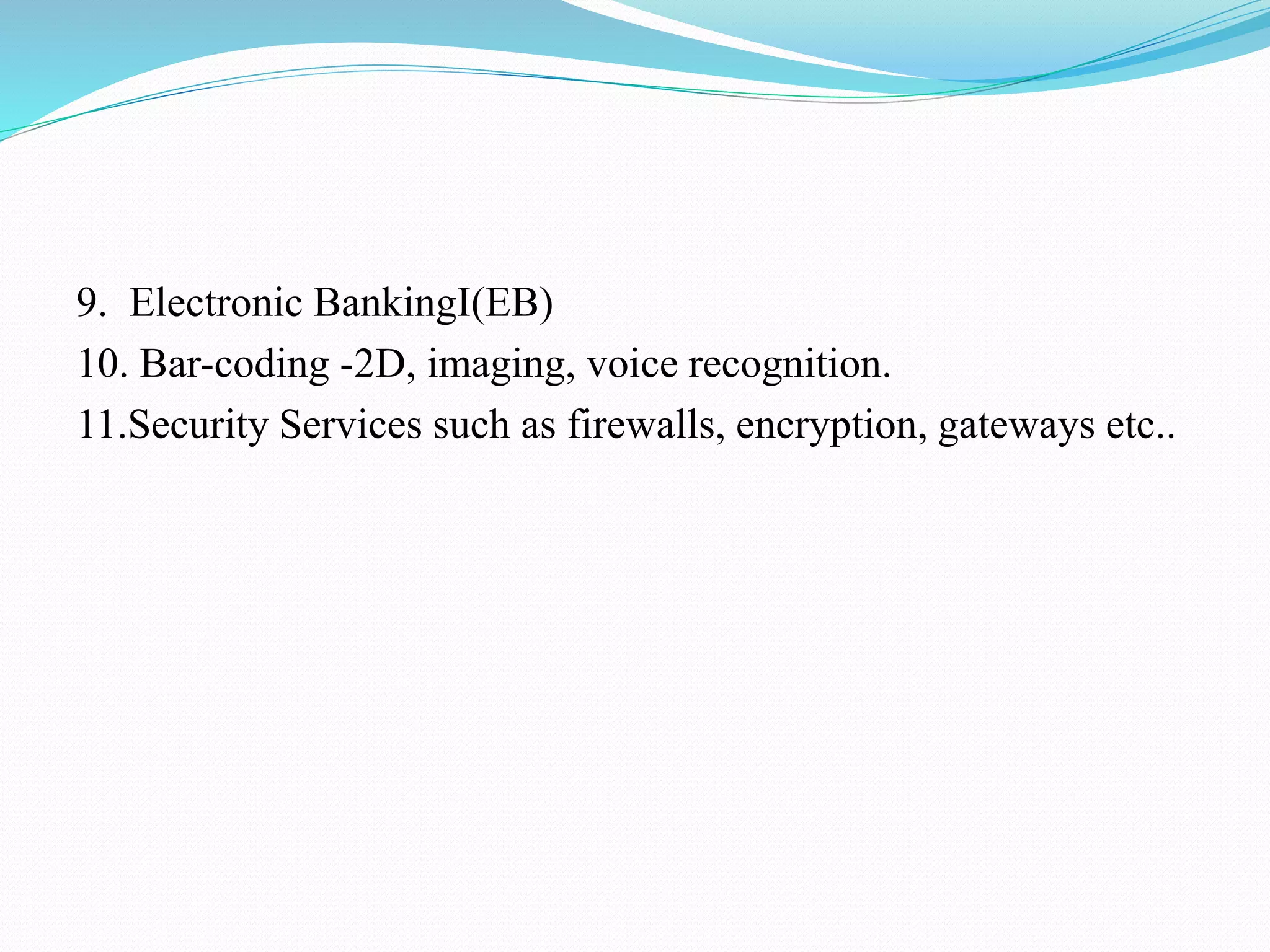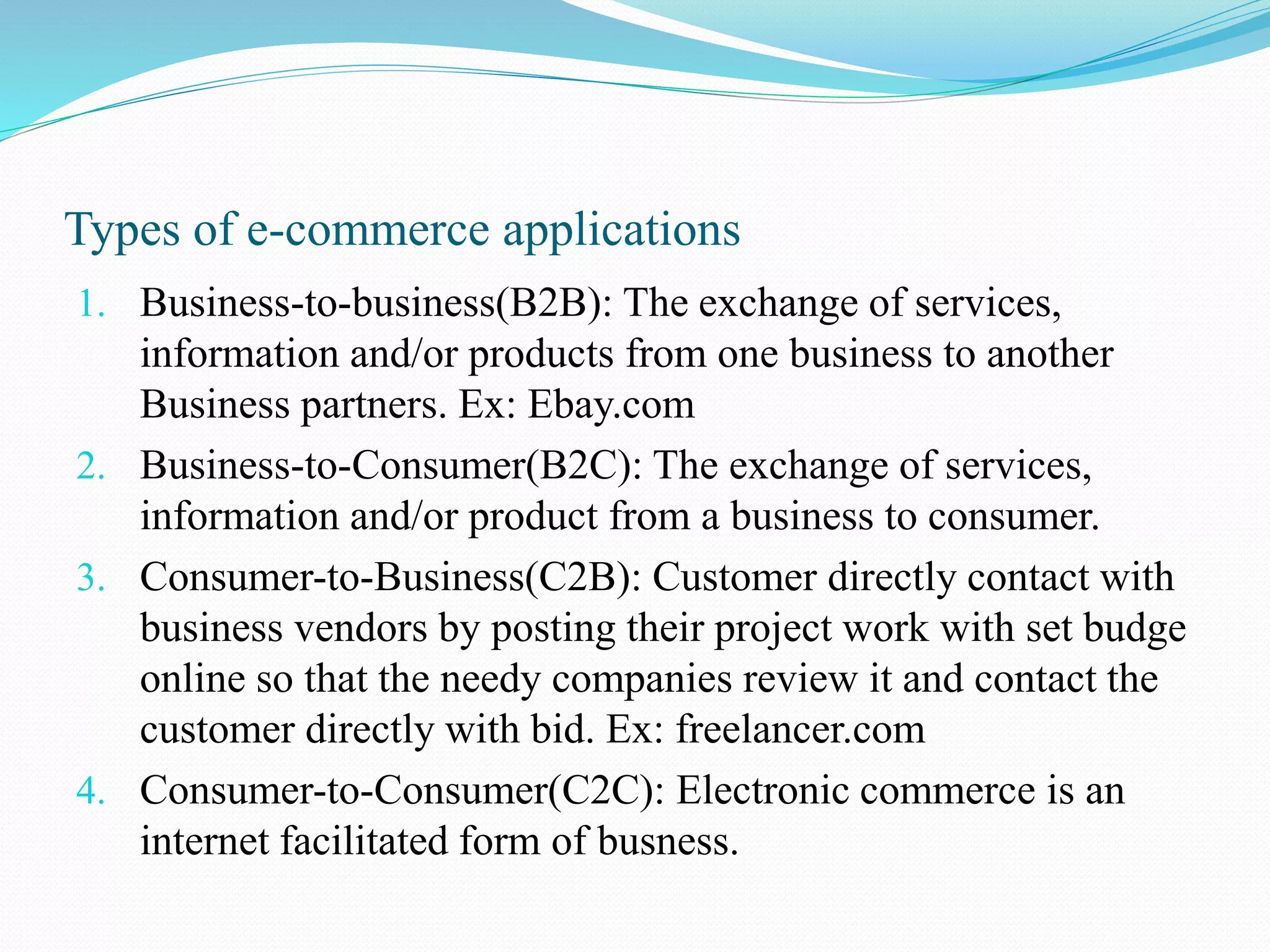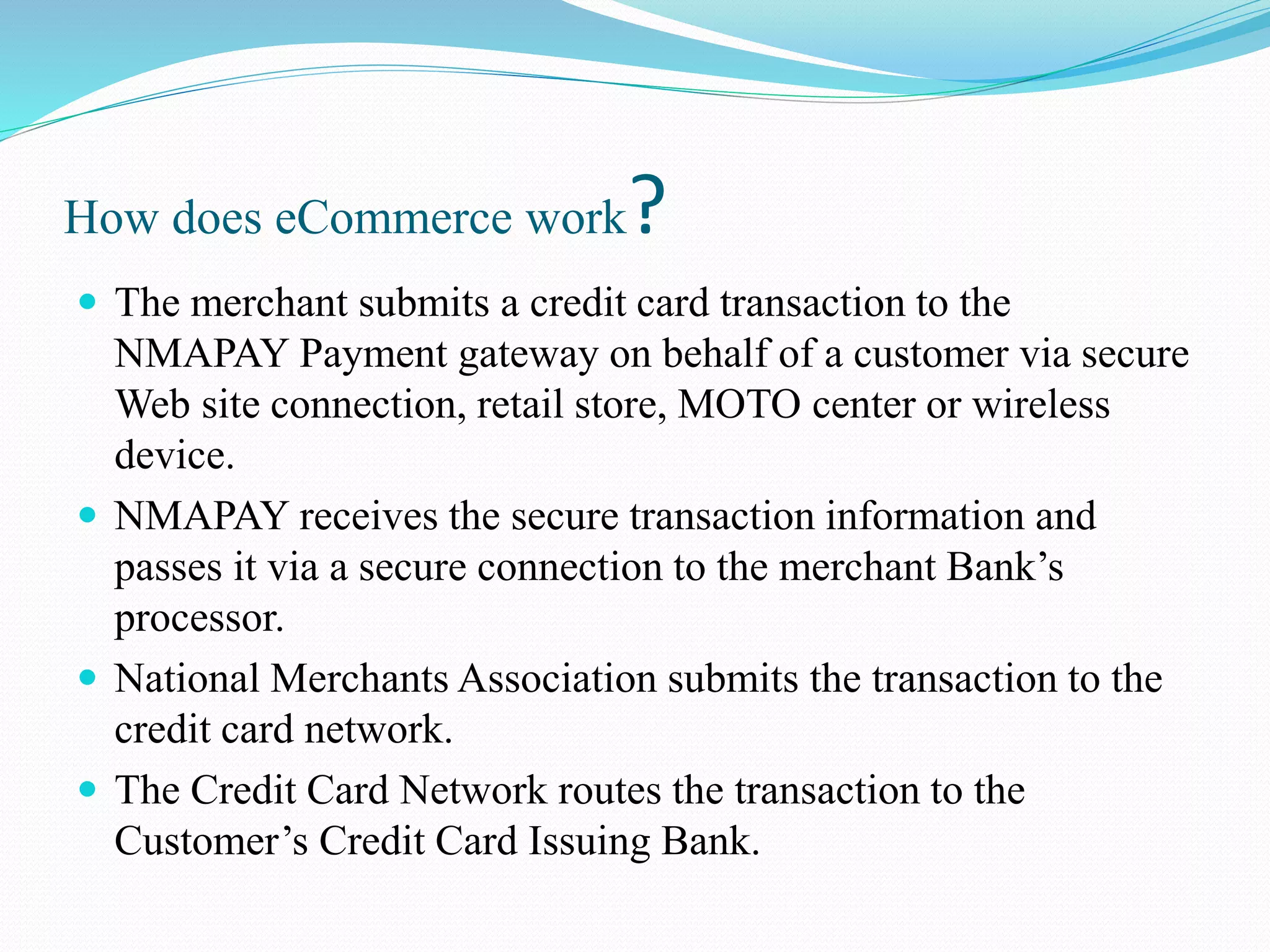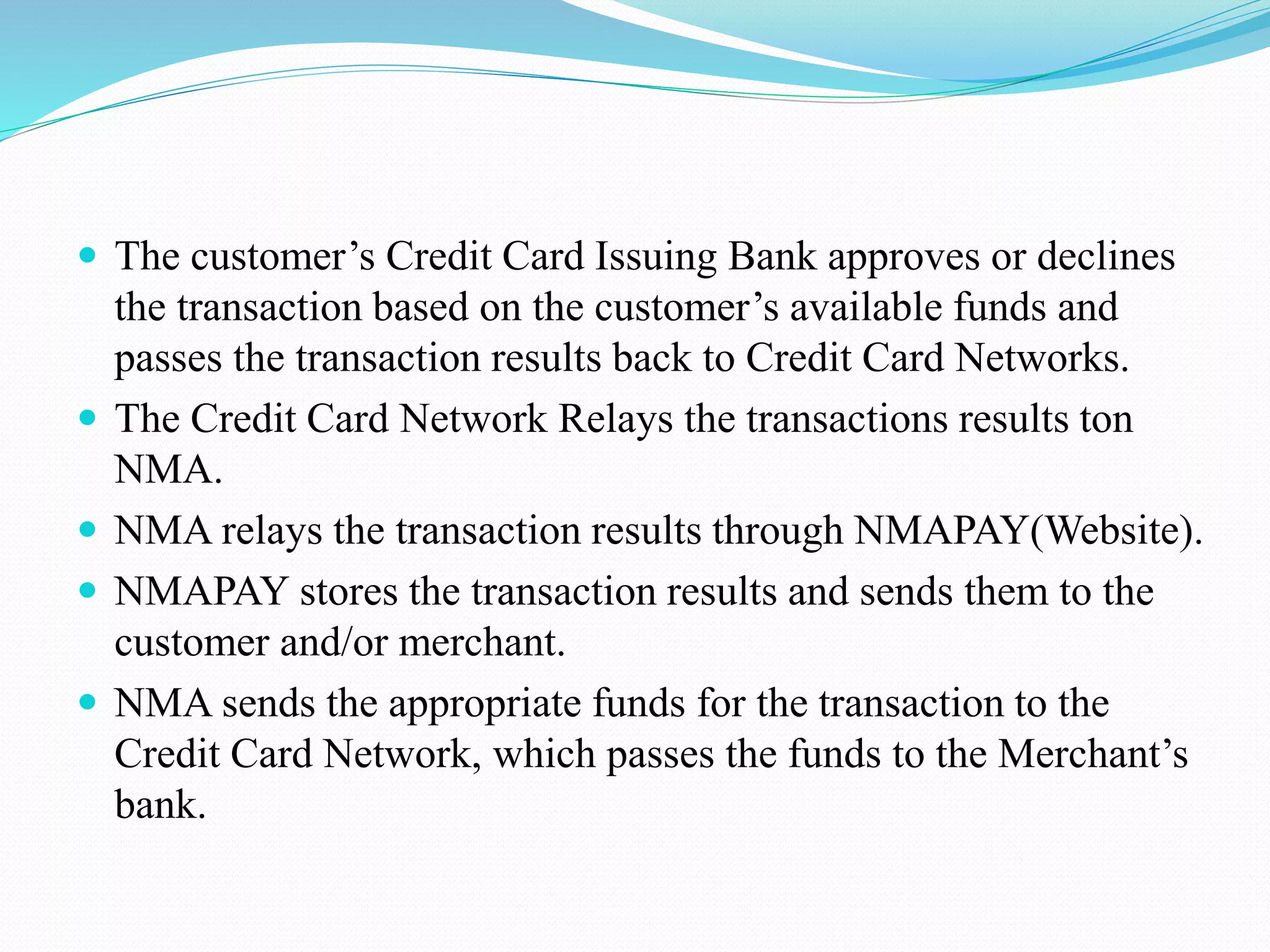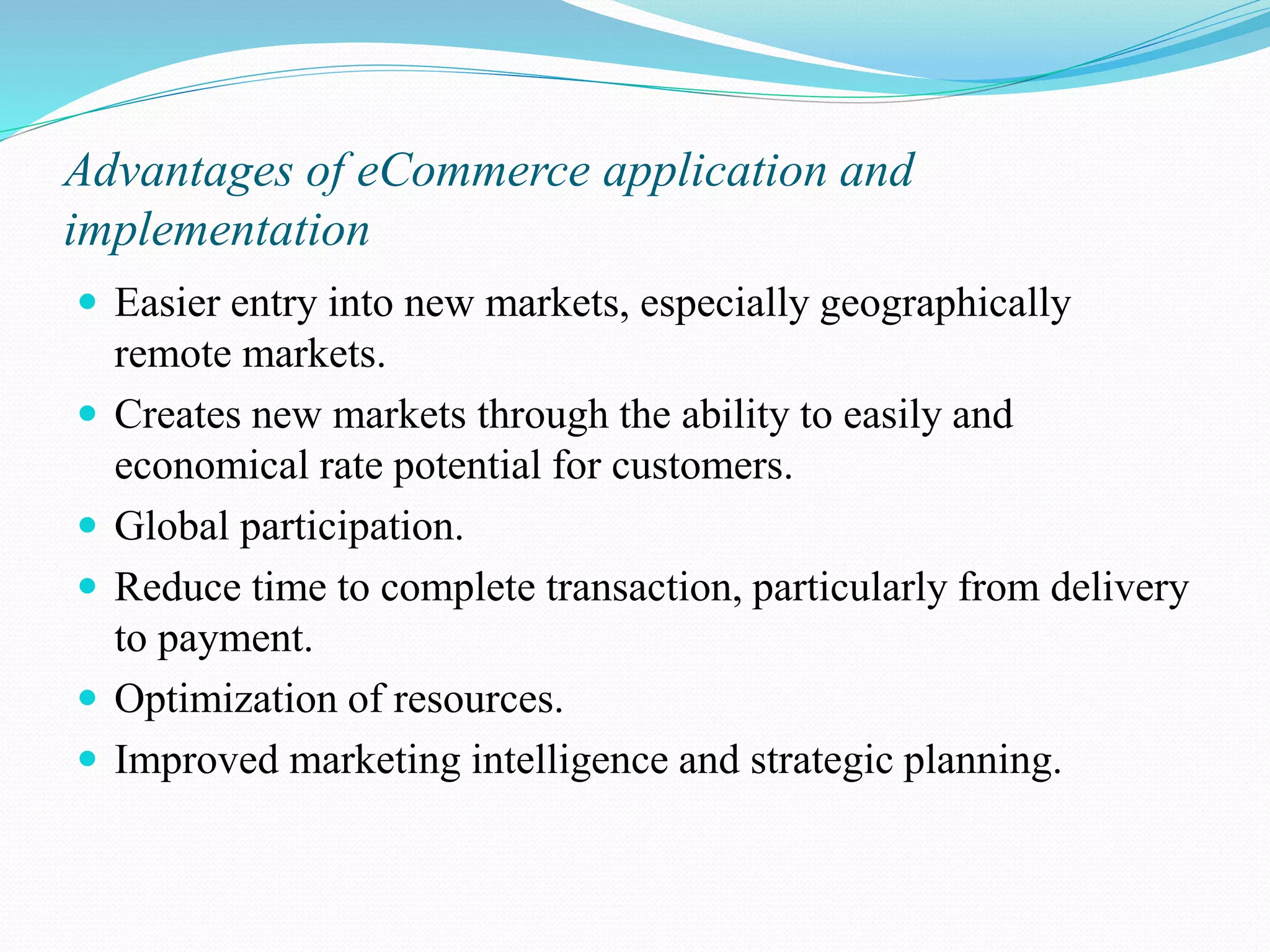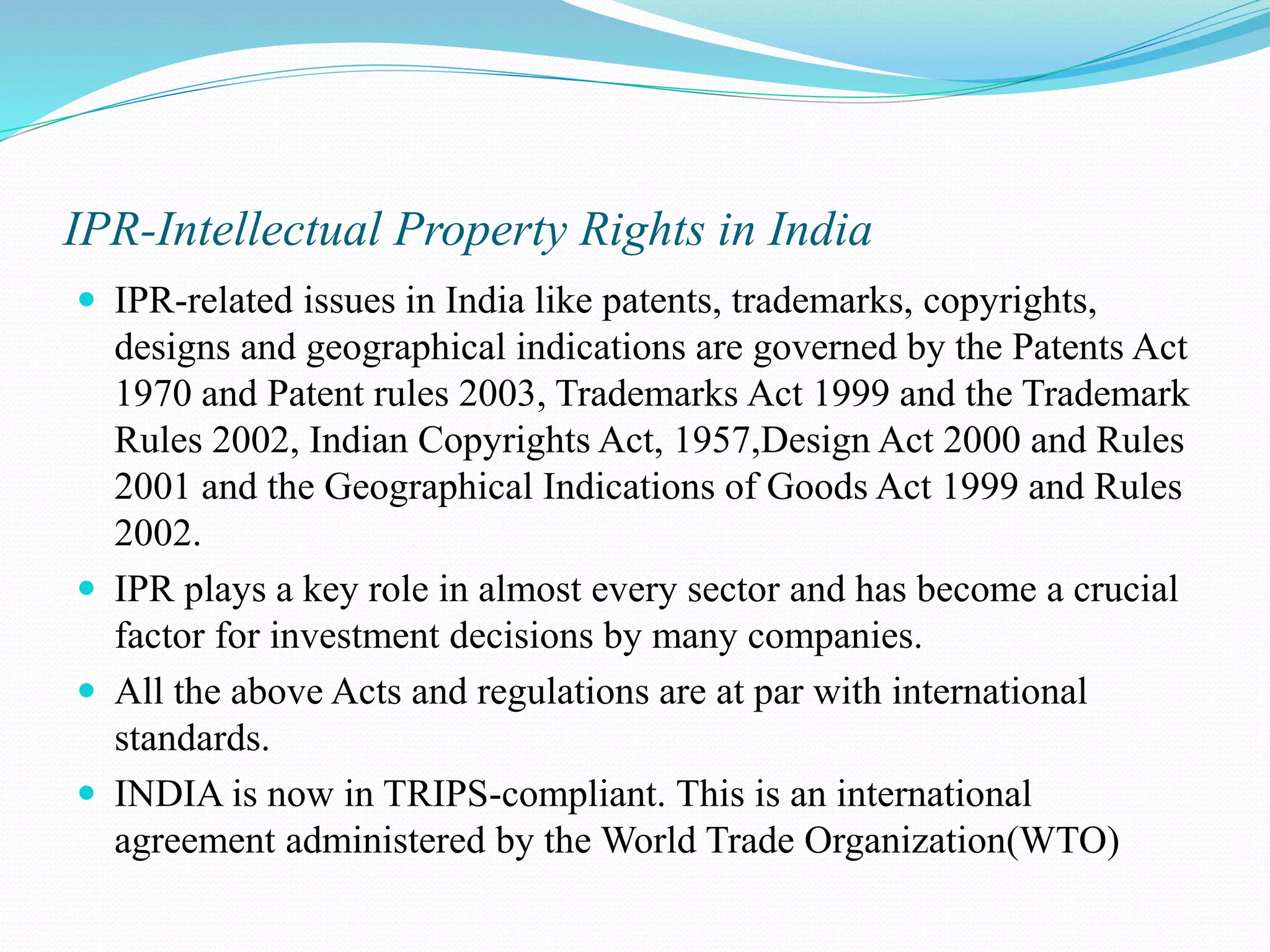Open source software refers to software with source code that is openly available and may be redistributed with few restrictions. Free software provides users complete freedom and control over the software, allowing them to run, study, share, and improve it. Open source software has more flexible licensing that does not require the software to be free of charge. Major organizations that support open source software include the Free Software Foundation, Open Source Initiative, and World Wide Web Consortium.
